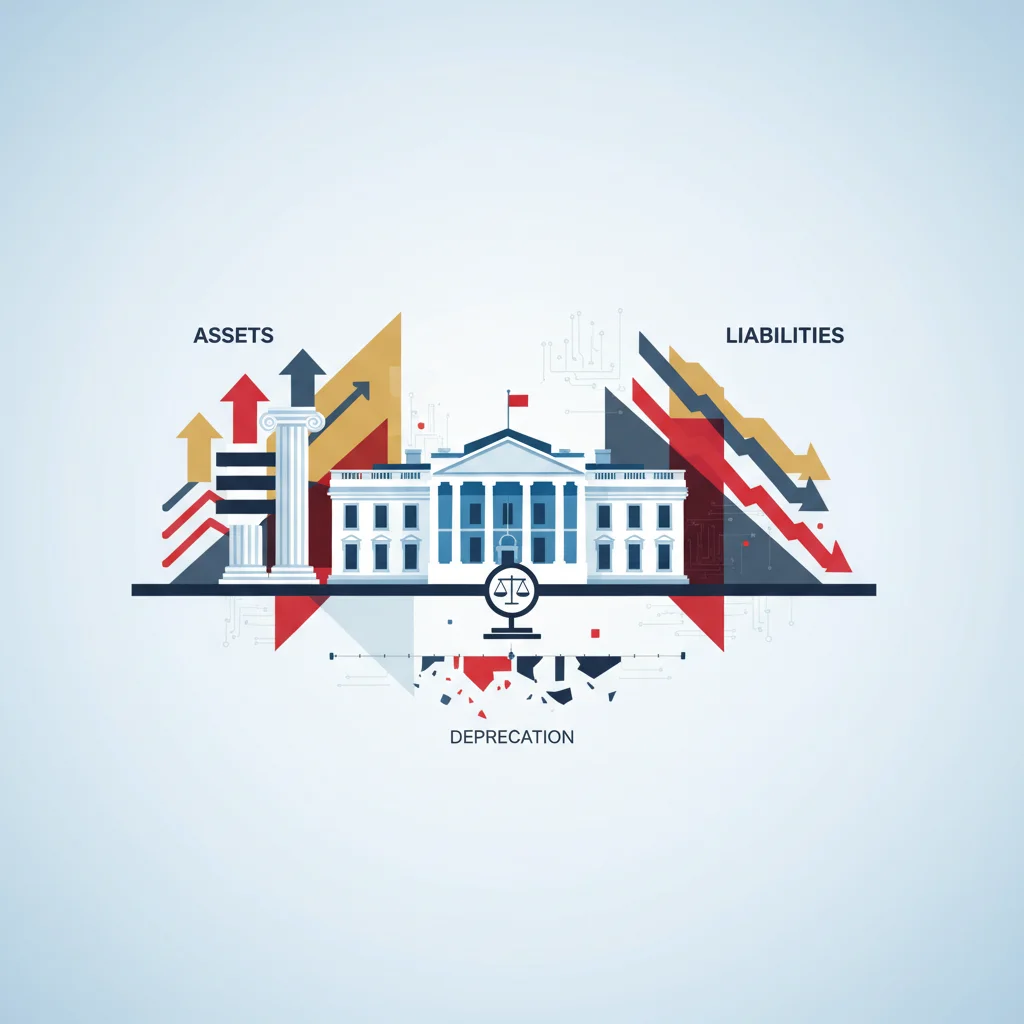
The White House Balance Sheet: Deconstructing the Economics of Presidential Aesthetics
The White House is more than the seat of American power; it is the nation’s most symbolic asset. Its architecture and interior design are not mere decorations but a carefully curated projection of stability, tradition, and economic philosophy to the world. Every coat of paint, every piece of furniture, and every structural addition is a transaction, trading in the currency of national identity. It is through this lens of economics and high-stakes branding that we must analyze the significant, and often controversial, refurbishments undertaken during the Trump administration.
While aesthetic debates are common, the changes made under President Trump, detailed in a revealing Financial Times report, sparked a different kind of conversation. The additions—from a grand neoclassical tennis pavilion to opulent ballroom chandeliers—were seen by critics not just as a matter of taste, but as a deliberate statement on wealth, power, and the very scale of the presidency. For investors, finance professionals, and business leaders, understanding these symbolic shifts is crucial. They offer a tangible glimpse into an administration’s worldview, one that can have ripple effects across the global economy and influence market perceptions of American leadership.
A Capital Expenditure in Gilded Style
To understand the financial and symbolic implications, we must first catalog the key changes. The Trump-era renovations were extensive, reflecting a distinct departure from the more understated, historically deferential approach of previous administrations. This wasn’t just a refresh; it was a rebranding.
The most prominent project was the construction of a new tennis pavilion on the South Lawn. Designed in a formal neoclassical style, it features a colonnade, grand windows, and a scale that some critics felt competed with the White House itself (source). Inside, the changes were equally bold. The State Floor’s East Room, a space for major ceremonies and announcements, was adorned with three colossal new chandeliers. Furthermore, the Red Room was repapered, and the Diplomatic Reception Room received a new rug featuring 50 state flowers, a design personally overseen by the First Lady.
These projects represent a significant capital expenditure on a national asset. While privately funded through the White House Historical Association, the aesthetic choices carry public weight. The style is reminiscent of a Gilded Age opulence, emphasizing grandeur, visible wealth, and an unapologetic projection of power. In the world of corporate branding, this would be akin to a company overhauling its headquarters to signal a new era of market dominance and profitability. The message is clear: strength is best communicated through scale and splendor.
Beyond the Balance Sheet: Why "Fun" Watches Are a Serious Play in Alternative Investing
The Economics of Architectural Symbolism
Architectural styles have always been intertwined with economic ideologies. The restrained Georgian and Neoclassical forms of the original White House speak to the Enlightenment ideals of the founding fathers: reason, order, and republican modesty. Subsequent eras added their own layers, each reflecting the prevailing economic and social winds. The Trump-era additions, however, can be seen as a deliberate pivot towards a different economic narrative.
Below is a comparative analysis of architectural styles often seen in government buildings and the economic philosophies they symbolically represent:
| Architectural Style | Core Characteristics | Symbolic Economic Message |
|---|---|---|
| Neoclassical (Traditional) | Symmetry, columns, restraint, historical reference | Stability, tradition, sound banking principles, long-term investing in institutions |
| Gilded Age / Beaux-Arts | Opulence, large scale, ornate details, expensive materials | Concentrated wealth, market dominance, capitalism as a powerful force, high-risk/high-reward |
| Modernist | Simplicity, functionalism, new materials (glass, steel) | Efficiency, innovation, forward-looking financial technology, disruption of old models |
| Postmodern | Eclectic, playful, historical appropriation, irony | Complex, fragmented markets; skepticism of grand economic narratives; globalization |
The Trump refurbishment squarely aligns with the Gilded Age/Beaux-Arts column. This style communicates a belief in the power of concentrated capital and a top-down vision of the economy. For the international community and financial markets, this sends a signal of assertive, perhaps even disruptive, leadership. It suggests a focus on big deals and grand gestures rather than incremental, systemic adjustments—a philosophy that mirrors the administration’s approach to international trading agreements and economic policy.
Managing a Priceless Asset: Public Trust vs. Private Taste
The stewardship of the White House is a delicate balance. It is both a private home for the First Family and a public museum owned by the American people. This creates a natural tension between personal taste and the obligation to preserve a national landmark. The Committee for the Preservation of the White House and the White House Historical Association exist to mediate this, ensuring changes respect the building’s history.
However, the influence of a sitting president and first lady is immense. The decision to proceed with large-scale projects, even when privately funded, sets a powerful precedent. It raises questions relevant to any long-term asset manager: How do you balance short-term vision with long-term value preservation? The “value” of the White House isn’t on a balance sheet; it’s measured in historical integrity and symbolic power. A renovation that alienates a significant portion of the population or is seen as a stylistic overreach could, in a sense, depreciate the asset’s intangible value. This is a critical lesson in public finance: the return on investment for national symbols is measured in public trust and national cohesion, not just dollars and cents.
Market Signals and the Geopolitics of Design
For those watching the stock market and global economic indicators, the goings-on at 1600 Pennsylvania Avenue are more than just political theater. They are a source of data on political stability and policy direction. An administration that projects an image of disruptive opulence may be perceived by international investors as more prone to bold, unpredictable policy moves. This can increase perceived political risk, which can, in turn, affect market volatility.
When foreign dignitaries walk through the Diplomatic Reception Room or the East Room, the environment shapes their perceptions of American power. The addition of massive, glittering chandeliers is not a neutral act. It is a non-verbal communication of immense wealth and a certain kind of power, one that may be interpreted as either confident and strong or as gaudy and insecure, depending on the visitor’s cultural and political context. These subtle signals contribute to the complex calculus of international relations, which underpins the entire global financial system.
The Rock & Roll Star's Guide to the Stock Market: Lessons from The Byrds vs. The Monkees
Ultimately, the “Ballroom Blitz” at the White House was more than a simple redecoration. It was a calculated investment in a specific brand of American identity. It prioritized a message of overwhelming strength and wealth, executed on a scale that demanded attention. By analyzing these choices through the framework of economics, finance, and asset management, we gain a deeper understanding of the administration’s core philosophy. The debate over style and scale is, at its heart, a debate over the character of the American economy and its role in the world. For business leaders and investors, the lesson is clear: always pay attention to the architecture. It often tells you more about the long-term strategy than any policy paper ever could.


